So here we are looking at the next four in the Oakesdale portfolio: 9-12. These pictures are the very core of the series and what I've been leading up to in the first eight. They also are very simple.
Number 9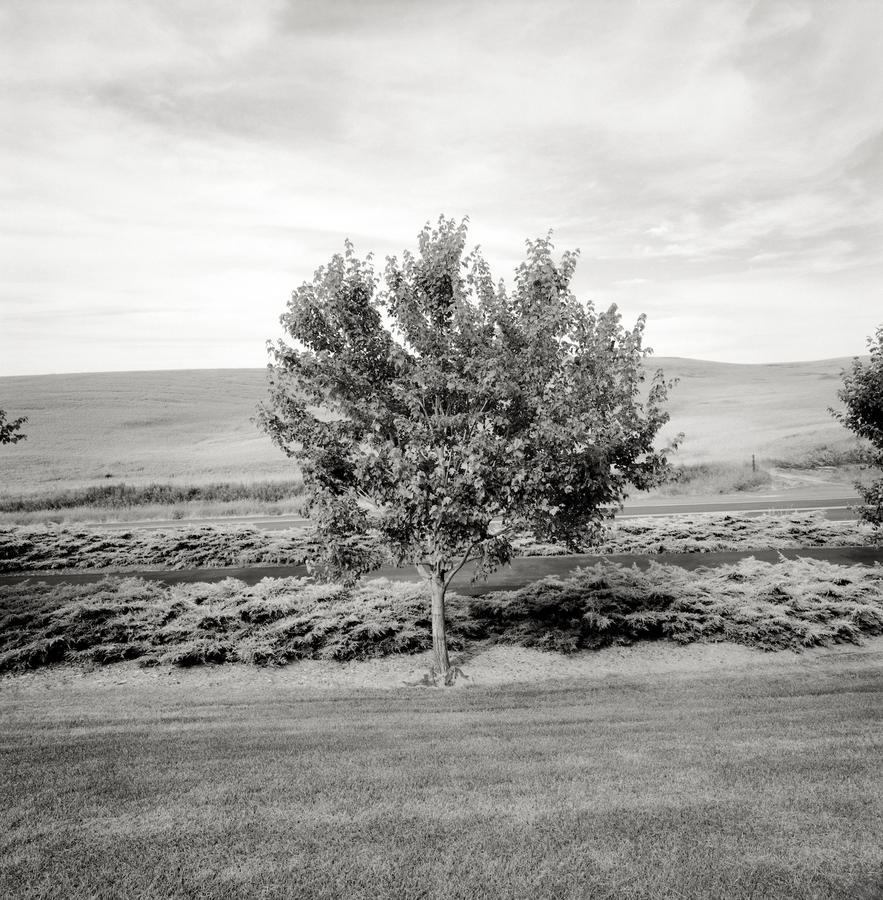 is primarily a single tree on the perimeter of the cemetery. I am asking the viewer to make the assumption that we are still in the cemetery, although there is nothing in the frame that verifies that. But I am also including the very edge of a tree on the right and left sides of the frame. Why? To lead you to the next photograph and establish this as a row of trees. This is important.
is primarily a single tree on the perimeter of the cemetery. I am asking the viewer to make the assumption that we are still in the cemetery, although there is nothing in the frame that verifies that. But I am also including the very edge of a tree on the right and left sides of the frame. Why? To lead you to the next photograph and establish this as a row of trees. This is important.
Number 10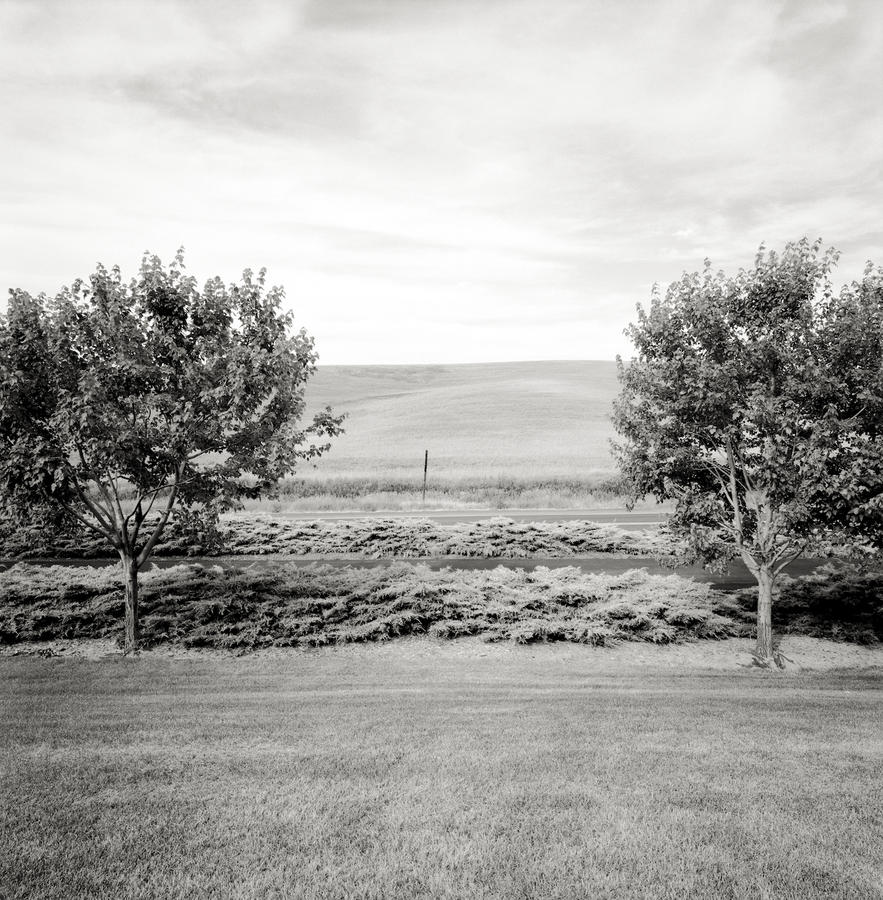 is made by simply shifting to the right a little and moving backwards. The Hasselblad Superwide camera I used to make these pictures, and in fact, all of the series from this time period, is a fixed lens camera. No zooming in and out to frame the picture as I wanted. So it would make sense that if I was to make a picture of two of the trees in the row I would need to move backwards. This is born out by the fact that these two trees are slightly smaller than that single tree picture. Why did I do this? Because I am now making a sequence of pictures within the larger full series of sixteen. Oakesdale Number 10 is once again referring to the outside of the cemetery but this time as a kind of release between the barriers of the trees to the left and to the right. You can probably predict where we are going next.
is made by simply shifting to the right a little and moving backwards. The Hasselblad Superwide camera I used to make these pictures, and in fact, all of the series from this time period, is a fixed lens camera. No zooming in and out to frame the picture as I wanted. So it would make sense that if I was to make a picture of two of the trees in the row I would need to move backwards. This is born out by the fact that these two trees are slightly smaller than that single tree picture. Why did I do this? Because I am now making a sequence of pictures within the larger full series of sixteen. Oakesdale Number 10 is once again referring to the outside of the cemetery but this time as a kind of release between the barriers of the trees to the left and to the right. You can probably predict where we are going next.
Number 11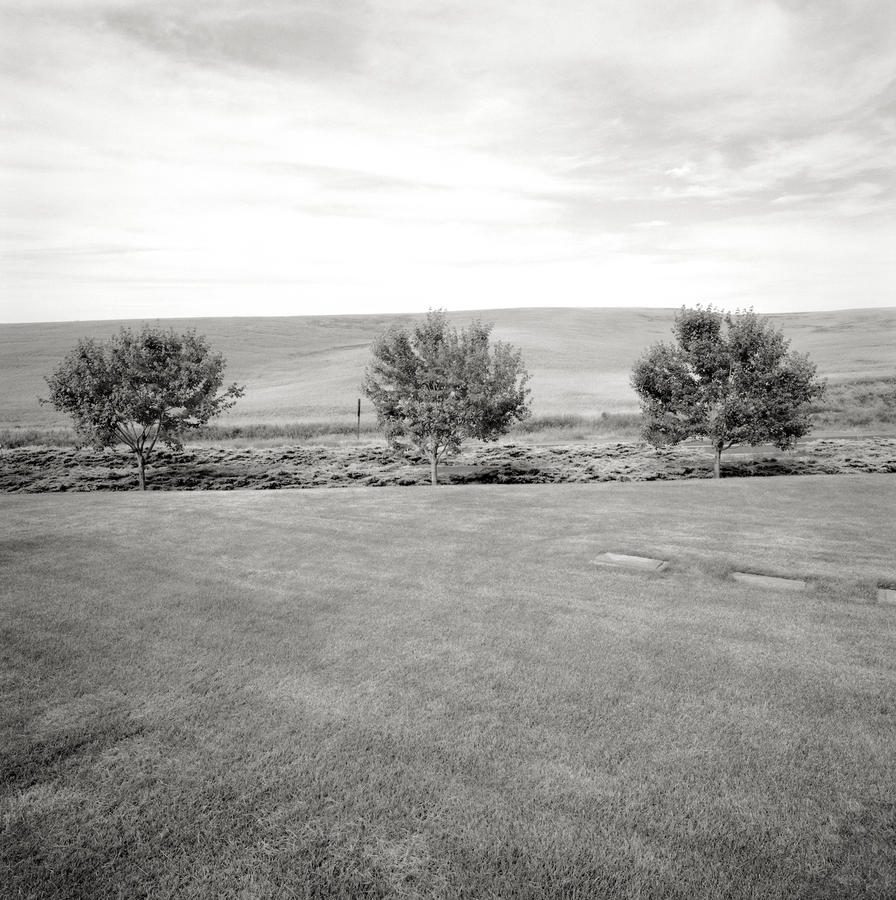 is much farther back on the hill and contextualizes the row of trees much more in the overall landscape of the wheat fields. In more recent years since I made the series, there is now a house built on the hill right behind these trees. Every year that I go back to shoot wheat fields, maybe fifteen times since 1997, I visit this cemetery.
is much farther back on the hill and contextualizes the row of trees much more in the overall landscape of the wheat fields. In more recent years since I made the series, there is now a house built on the hill right behind these trees. Every year that I go back to shoot wheat fields, maybe fifteen times since 1997, I visit this cemetery.
Number eleven makes a connection to the religious trilogy: the father, the son and the holy ghost, but only as a way to lean the viewer towards something a little more somber and weighty. I am not religious but went to a high school that exposed us to daily sermons in a chapel. So here we are, coming to the single picture that is the foundation of the series and I've led us up to it by starting with one tree, then two, then three. This is three pictures and three trees in the third picture. Threes is key in this series.
Number 12: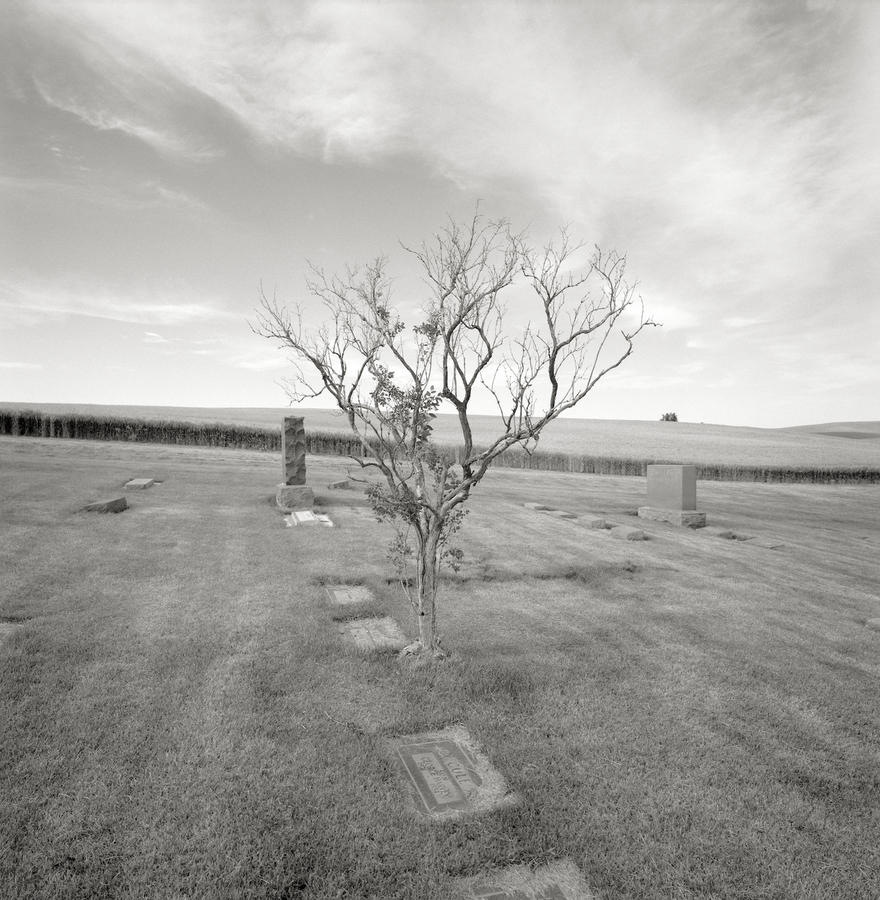 back to a single tree, closer and smaller and turning left away from the previous three frames. And, to me at least, this tree is more dead than alive. Yes, it has some growth on it but it is clearly struggling. This tree is the main reason I go back to the cemetery whenever I am out shooting wheat fields in Washington, to check up whether it is still alive.
back to a single tree, closer and smaller and turning left away from the previous three frames. And, to me at least, this tree is more dead than alive. Yes, it has some growth on it but it is clearly struggling. This tree is the main reason I go back to the cemetery whenever I am out shooting wheat fields in Washington, to check up whether it is still alive.
This is from last August, 2012: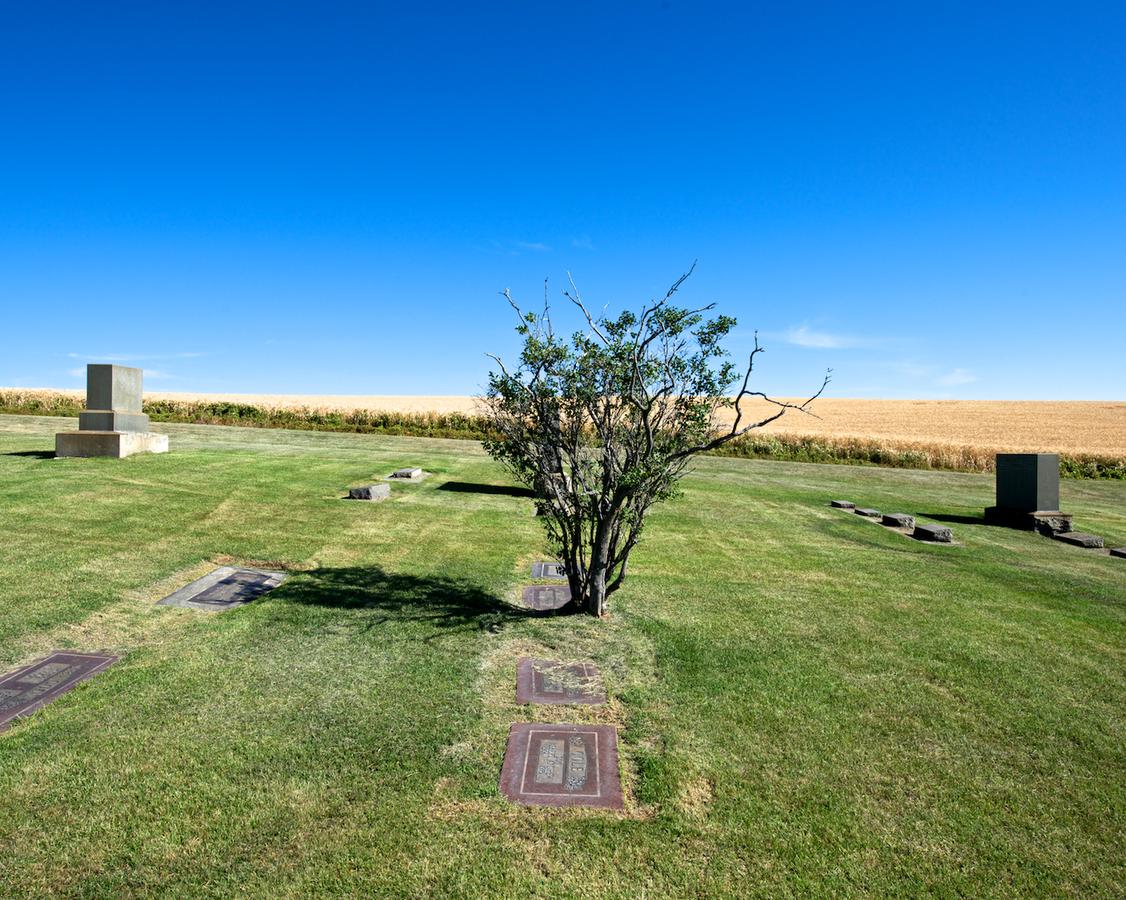 Clearly it is, 16 years later.
Clearly it is, 16 years later.
So why so much emphasis on this one tree? What does it symbolize for me? One of my very good friends from graduate school was seriously sick and died of cancer a year after I made the Oakesdale Series. He was on my mind and this tree was him somehow. So this picture is intended to be the emotional center of the series and I wanted the rest of the photographs in the group to swing around this one fulcrum.
I stated earlier that the Oakesdale series is a center and base to the body of work done over my career. If that is true then the single tree picture is the base to the series. We felt this concept was important enough that we used these four pictures to symbolize my series work on the cover of my monograph "American Series", published in 2006.
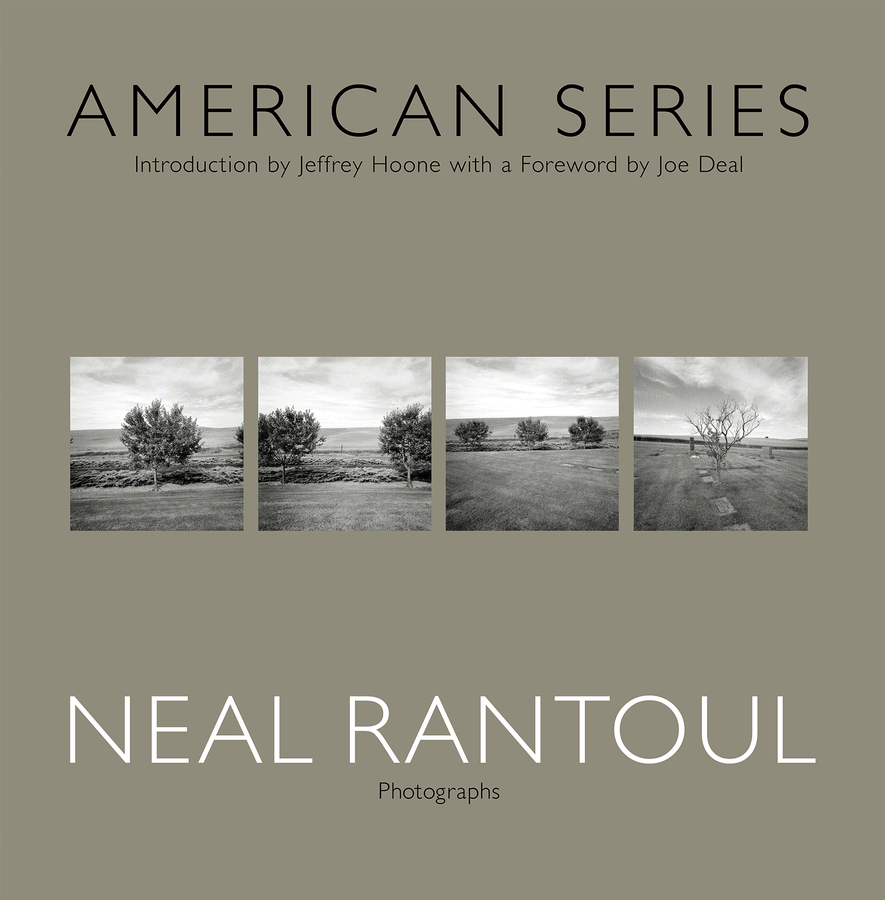
In Oakesdale Cemetery Take 4, I will take us through the series to its end.
Stay tuned.




 brings us back, once again, to the view looking out. This is the third time I did this, point the camera out to the reduced content of just grass, wheat and sky and it reinforces the concept of using "threes" within the series. Music has been an important influence to me throughout my career and this is apparent in the Oakesdale series. It is born out by these three frames as they ground the series in the rhythm of the "facing out" approach.
brings us back, once again, to the view looking out. This is the third time I did this, point the camera out to the reduced content of just grass, wheat and sky and it reinforces the concept of using "threes" within the series. Music has been an important influence to me throughout my career and this is apparent in the Oakesdale series. It is born out by these three frames as they ground the series in the rhythm of the "facing out" approach.  Number 14 is a very different photograph than the rest. For it to be framed so closed in on the right side isn't something you've seen before and the branch hanging down in the middle is intrusive to the rest of the image and practically obscures the two trees behind it. Why? For weight. For me this picture is another "core"picture to the series in that it has a very straightforward approach to these graves, that it acknowledges that there are dead people in the ground below those stones and that the world goes on after we die. I have a friend who owns this print and I will never forget her reaction to seeing it for the first time. She took in a big gulp of air as though she was shocked by it and then cried.
Number 14 is a very different photograph than the rest. For it to be framed so closed in on the right side isn't something you've seen before and the branch hanging down in the middle is intrusive to the rest of the image and practically obscures the two trees behind it. Why? For weight. For me this picture is another "core"picture to the series in that it has a very straightforward approach to these graves, that it acknowledges that there are dead people in the ground below those stones and that the world goes on after we die. I have a friend who owns this print and I will never forget her reaction to seeing it for the first time. She took in a big gulp of air as though she was shocked by it and then cried. Now we are definitely on our way to ending this body of work. Many of my pictures acquire nicknames and this one has been titled the "burning bush" picture by friends. It actually is because I am again at the edge of the cemetery but this time pointing into the sun. I had a colleague at Northeastern where I taught who used to kid me about lens flare in my pictures. The Superwide would flare very easily due to its lens taking in such an extremely wide angle. I tried to use what it did creatively and in this case its lens flare was intentional. See
Now we are definitely on our way to ending this body of work. Many of my pictures acquire nicknames and this one has been titled the "burning bush" picture by friends. It actually is because I am again at the edge of the cemetery but this time pointing into the sun. I had a colleague at Northeastern where I taught who used to kid me about lens flare in my pictures. The Superwide would flare very easily due to its lens taking in such an extremely wide angle. I tried to use what it did creatively and in this case its lens flare was intentional. See  is taken at the same angle as the "burning bush" picture previously but I have backed up to make this picture, to include more of the cemetery and less of the wheat fields. In this last picture in the series, I wanted to show that the cemetery was part of the overall landscape, as opposed to being separated from its surroundings. Notice that there is no lens flare here. I use a technique that has me standing there with the camera held up to my eye, holding it with my right hand and then using my left hand and arm to throw a shadow across the front of the camera to keep the lens from flaring. I did that here.
is taken at the same angle as the "burning bush" picture previously but I have backed up to make this picture, to include more of the cemetery and less of the wheat fields. In this last picture in the series, I wanted to show that the cemetery was part of the overall landscape, as opposed to being separated from its surroundings. Notice that there is no lens flare here. I use a technique that has me standing there with the camera held up to my eye, holding it with my right hand and then using my left hand and arm to throw a shadow across the front of the camera to keep the lens from flaring. I did that here. is primarily a single tree on the perimeter of the cemetery. I am asking the viewer to make the assumption that we are still in the cemetery, although there is nothing in the frame that verifies that. But I am also including the very edge of a tree on the right and left sides of the frame. Why? To lead you to the next photograph and establish this as a row of trees. This is important.
is primarily a single tree on the perimeter of the cemetery. I am asking the viewer to make the assumption that we are still in the cemetery, although there is nothing in the frame that verifies that. But I am also including the very edge of a tree on the right and left sides of the frame. Why? To lead you to the next photograph and establish this as a row of trees. This is important. is made by simply shifting to the right a little and moving backwards. The Hasselblad Superwide camera I used to make these pictures, and in fact, all of the series from this time period, is a fixed lens camera. No zooming in and out to frame the picture as I wanted. So it would make sense that if I was to make a picture of two of the trees in the row I would need to move backwards. This is born out by the fact that these two trees are slightly smaller than that single tree picture. Why did I do this? Because I am now making a sequence of pictures within the larger full series of sixteen. Oakesdale Number 10 is once again referring to the outside of the cemetery but this time as a kind of release between the barriers of the trees to the left and to the right. You can probably predict where we are going next.
is made by simply shifting to the right a little and moving backwards. The Hasselblad Superwide camera I used to make these pictures, and in fact, all of the series from this time period, is a fixed lens camera. No zooming in and out to frame the picture as I wanted. So it would make sense that if I was to make a picture of two of the trees in the row I would need to move backwards. This is born out by the fact that these two trees are slightly smaller than that single tree picture. Why did I do this? Because I am now making a sequence of pictures within the larger full series of sixteen. Oakesdale Number 10 is once again referring to the outside of the cemetery but this time as a kind of release between the barriers of the trees to the left and to the right. You can probably predict where we are going next. is much farther back on the hill and contextualizes the row of trees much more in the overall landscape of the wheat fields. In more recent years since I made the series, there is now a house built on the hill right behind these trees. Every year that I go back to shoot wheat fields, maybe fifteen times since 1997, I visit this cemetery.
is much farther back on the hill and contextualizes the row of trees much more in the overall landscape of the wheat fields. In more recent years since I made the series, there is now a house built on the hill right behind these trees. Every year that I go back to shoot wheat fields, maybe fifteen times since 1997, I visit this cemetery.  back to a single tree, closer and smaller and turning left away from the previous three frames. And, to me at least, this tree is more dead than alive. Yes, it has some growth on it but it is clearly struggling. This tree is the main reason I go back to the cemetery whenever I am out shooting wheat fields in Washington, to check up whether it is still alive.
back to a single tree, closer and smaller and turning left away from the previous three frames. And, to me at least, this tree is more dead than alive. Yes, it has some growth on it but it is clearly struggling. This tree is the main reason I go back to the cemetery whenever I am out shooting wheat fields in Washington, to check up whether it is still alive. Clearly it is, 16 years later.
Clearly it is, 16 years later. further grounds the series in the fact that I am shooting in a cemetery. Did I know that this is dangerous territory for a serious artist? That cemetery photographs have connotations akin to sunset pictures and perhaps even baby pictures in terms of cliché?
further grounds the series in the fact that I am shooting in a cemetery. Did I know that this is dangerous territory for a serious artist? That cemetery photographs have connotations akin to sunset pictures and perhaps even baby pictures in terms of cliché?  No escaping this. I had read "Where's Waldo?"to my daughter Maru when she was growing up. If you don't know "Where's Waldo?"they are a great series of books of drawings where you need to search through hundreds of tiny figures to find "Waldo".
No escaping this. I had read "Where's Waldo?"to my daughter Maru when she was growing up. If you don't know "Where's Waldo?"they are a great series of books of drawings where you need to search through hundreds of tiny figures to find "Waldo". 
 Hopefully, the meaning of this picture isn't lost on you. This is my way of bringing us back to where we are, surrounded by wheat fields. We've been immersed in the inside content of the cemetery itself for several frames. Now we can breath a little as we have some escape out of the space into big sky country. This also sets us up for number eight.
Hopefully, the meaning of this picture isn't lost on you. This is my way of bringing us back to where we are, surrounded by wheat fields. We've been immersed in the inside content of the cemetery itself for several frames. Now we can breath a little as we have some escape out of the space into big sky country. This also sets us up for number eight. We are now smack dab in the middle of the series. So far we've looked out and we've looked in. Nothing very heavy or deep but this one forecasts perhaps more substance to come. We are, in effect, looking up and it is a darker "up" than anything so far. It is also a respite in shade from some of the other pictures that are very bright.
We are now smack dab in the middle of the series. So far we've looked out and we've looked in. Nothing very heavy or deep but this one forecasts perhaps more substance to come. We are, in effect, looking up and it is a darker "up" than anything so far. It is also a respite in shade from some of the other pictures that are very bright.  In a review of the work in the Boston Globe, Mark Feeney wrote "What makes the sight of that truck on Oakesdale so thrilling isn't just how perfectly it's placed. It's the additional knowledge that someone parked it there before Rantoul clicked the shutter and someone later drove it away."
In a review of the work in the Boston Globe, Mark Feeney wrote "What makes the sight of that truck on Oakesdale so thrilling isn't just how perfectly it's placed. It's the additional knowledge that someone parked it there before Rantoul clicked the shutter and someone later drove it away." If there was any doubt in my mind that I was starting now to make a major series for me it was these two consecutive frames that convinced me. This second frame was intended to "essentialize" the set, to establish just where I was (in the middle of wheat field country). As a way to confirm this but also to allow a look out to just the wheat, the next frame gives us just the grass, the wheat and the sky (with tiny little wild flowers scattered in the foreground):
If there was any doubt in my mind that I was starting now to make a major series for me it was these two consecutive frames that convinced me. This second frame was intended to "essentialize" the set, to establish just where I was (in the middle of wheat field country). As a way to confirm this but also to allow a look out to just the wheat, the next frame gives us just the grass, the wheat and the sky (with tiny little wild flowers scattered in the foreground): This frame becomes important later as you will see for I have now set up a repeating structure that I will return to throughout the series. The third image in the set is my paying respect to minimalism but also sets us up for the next frame which I believe is crucial because I haven't yet shown that we are in a cemetery. I do this by spinning around 180 degrees and looking in for the first time instead of out:
This frame becomes important later as you will see for I have now set up a repeating structure that I will return to throughout the series. The third image in the set is my paying respect to minimalism but also sets us up for the next frame which I believe is crucial because I haven't yet shown that we are in a cemetery. I do this by spinning around 180 degrees and looking in for the first time instead of out: Thanks to an increasing list of subscribers to the blog I am now confident that I have you reading my posts. Thank you. It is rewarding to have you along for the ride. So, I am now going to leave you hanging with only four of the sixteen pictures discussed in "Oakesdale", with a second installment to come along soon. I hope you stay tuned.
Thanks to an increasing list of subscribers to the blog I am now confident that I have you reading my posts. Thank you. It is rewarding to have you along for the ride. So, I am now going to leave you hanging with only four of the sixteen pictures discussed in "Oakesdale", with a second installment to come along soon. I hope you stay tuned.